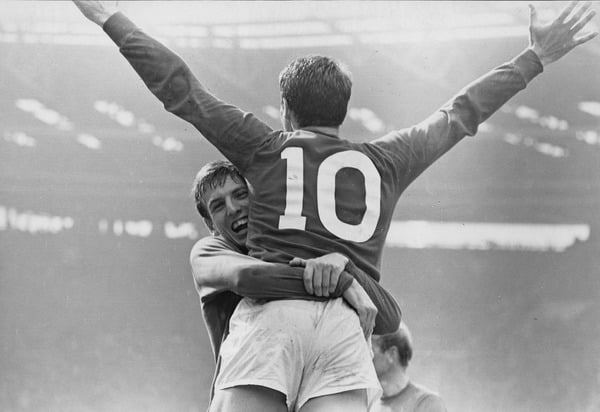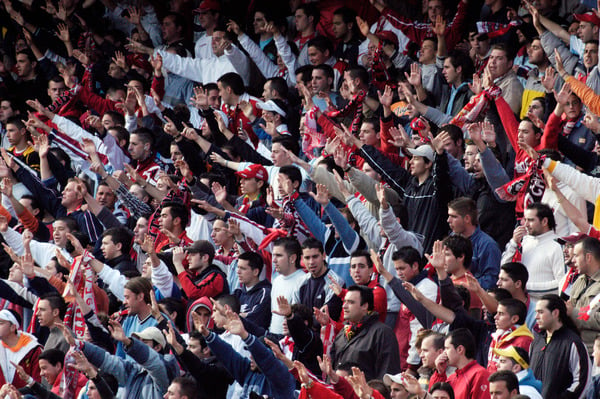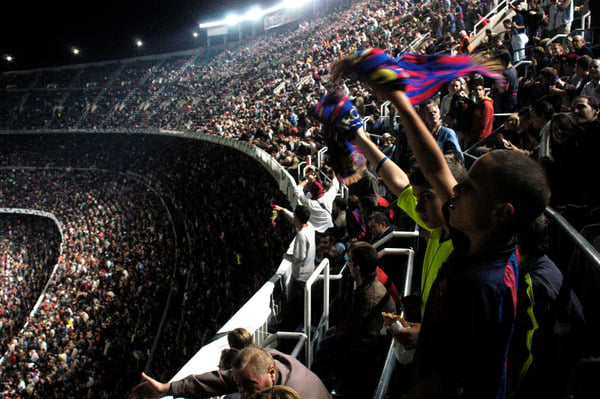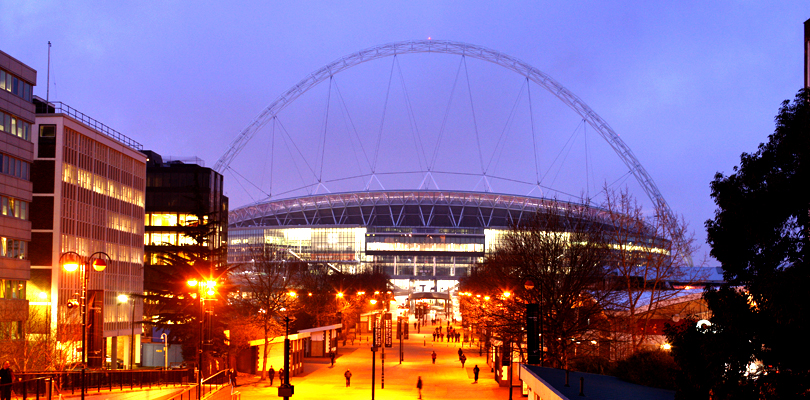
The Cult of the Football Stadium
The number of ambitious, cutting-edge football stadia has increased exponentially in the past few decades. But when all evidence strongly suggests bankruptcy, why is there still so much investment?
“The football stadium has always been the place of the game, of violence, of community, of mass cheering and of grief…”
– Sybille Frank and Silke Streets, ‘Stadium Worlds’
It is easy to be cynical about the current trend of constructing bigger, glitzier football stadiums. Designed by renowned architects (including Zaha Hadid for Qatar and Herzog & de Meuron for Bordeaux) and featuring state-of-the-art technology (such as the solar-panelled roof at the Mineirão Stadium, Brazil), they are a flamboyant show of wealth and ego, which would, theoretically, feed off fanatical obsessives.
But in reality, many stadiums hang on a knife’s edge between breaking even and losing money. Even a world-class venue like Wembley, London – with its extensive sponsorship, high-profile music concerts and other events – barely meets their bottom line year after year.
So what drives investors to keep funding these increasingly elaborate new stadiums?
The answer: sentimentality, imagination and hope.
Beyond their walls, turnstile gates and pitches, football stadiums are blank shells brought to life by groups of people with a shared passion and identity.
It is well discussed in literature that a stadium is also built by the fans. In their book ‘Stadium Worlds’, Sybille Frank and Silke Streets describe stadia as “a product of action [that] both contain and enable action”. A true (or successful) football stadium is created on two levels: one, through physically housing the game and two, through the collective experience of cheering, singing, swearing, victories and losses.
The football stadium is also a space of mystery. There is a distinct separation throughout the building: first, between home and away teams that do not enter each other’s areas; second, between the ‘front stage’ of spectating the game and the ‘back stage’ where only players are allowed to inhabit; and finally, the hierarchical space between the crowd and the exclusive VIP boxes.
No matter how many times they may have seen the ‘back stage’ on television documentaries, some fans will still pay good money to cross the boundaries into these private areas – be it meeting the players in the changing rooms or purchasing privileged season tickets – because these spaces have fuelled their imaginations and expectations.
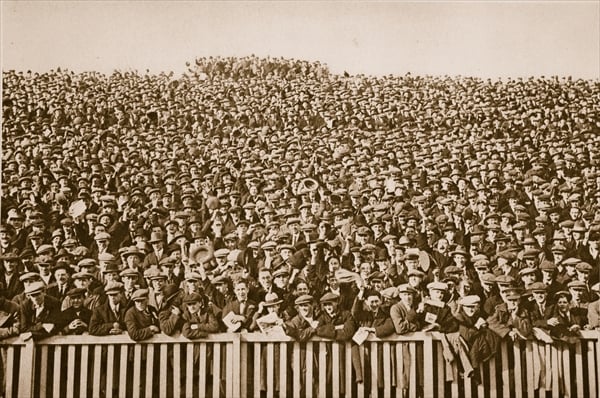
STC335892 Saturday football crowd (sepia photo) by English Photographer, (20th century); Private Collection; The Stapleton Collection
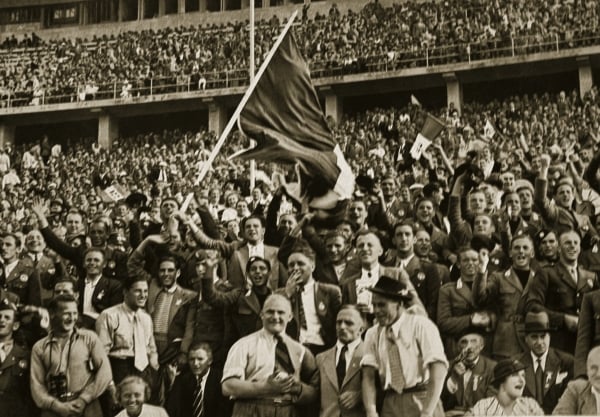
STC359519 The Italian fans in the Olympic stadium cheering on the winning team against Austria with many cheers and the waving of all sorts of flags, 1936 (b/w photo) by German Photographer, (20th century); Private Collection; The Stapleton Collection
The significance of football stadiums is psychological; it can even be argued that it is as much a sentimental construct as a physical space. The building fuels hope – for excitement, triumph and happiness – and this is a lucrative risk worth taking by investors. With not much hope left in these politically, economically and socially-trying times, the trend for big, glitzy stadia will not be dying any time soon.
Further reading:
Sybille Frank and Silke Steets (eds). ‘Stadium Worlds: Football, Space and the Built Environment’. London and New York: Routledge, 2010.
Michele Provoots (ed). ‘The Stadium: Architecture of Mass Sport’. Rotterdam: NAi, 2000.
Find out more:
All images in this article are sourced from the Bridgeman archive. Contact their sales team on uksales@bridgemanimages.com for more information about licensing, reproduction and clearing copyright.

